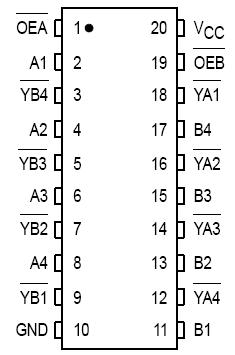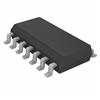MC74VHCT240A: Features: • High Speed: tPD = 5.6ns (Typ) at VCC = 5V• Low Power Dissipation: ICC = 4mA (Max) at TA = 25°C• TTLCompatible Inputs: VIL = 0.8V; VIH = 2.0V• Power Down Protectio...
floor Price/Ceiling Price
- Part Number:
- MC74VHCT240A
- Supply Ability:
- 5000
Price Break
- Qty
- 1~5000
- Unit Price
- Negotiable
- Processing time
- 15 Days
SeekIC Buyer Protection PLUS - newly updated for 2013!
- Escrow Protection.
- Guaranteed refunds.
- Secure payments.
- Learn more >>
Month Sales
268 Transactions
Payment Methods
All payment methods are secure and covered by SeekIC Buyer Protection PLUS.

 MC74VHCT240A Data Sheet
MC74VHCT240A Data Sheet







